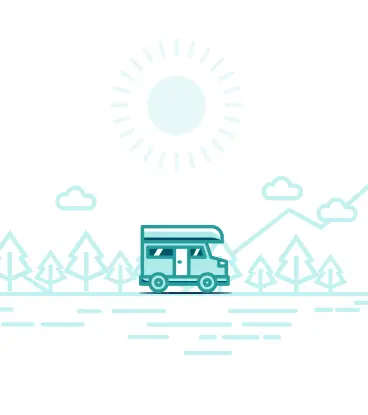
Living in Puna - The Good, the Bad and the Coqui

Listen to audio sample:
What do you enjoy the most in Big Island? In the back of your mind, do you wish you could live there? C’mon, who doesn’t want to live in Hawaii, right? Puna is the most affordable area in the entire island, making it a perfect place to live in paradise. We want to tell you about the good, the bad, and the “coqui” about living in Puna. Keep reading!
GOOD
First, the good. There are so many good things about Puna! The beautiful scenery, serene countryside and laid-back atmosphere, to name a few. Land is pretty affordable, and is relatively abundant. This draws in an interesting community of artists, bohemians, hippies, retirees and those looking to live an open lifestyle. So “punatics” - or the local residents - are actually a friendly melting pot of cultures. Many grow their own food. For those that don’t, there are plenty of options of farmers’ markets.
Another good thing about Puna is that the people here are pretty self-reliant. You see, much of Puna does not have a water line or sewer line. Yeah, we’re a little behind on infrastructure, that’s why all the public restrooms are porta-potty, in case you were wondering. This requires the locals here to adapt, many of them learning how to live off-grid. For electricity that’s easy, they have solar panels. But what do you do for water? Thankfully, annual rainfall is between 130 inches to 200 inches depending on elevation, making Puna one of the wettest cities in the United States! On average it rains at least once a day. With this gift from Heaven, locals use a rain catchment system to catch rain. Yes that’s right, you may notice houses with a big ‘above ground’ container or circular holding tank. Those tanks are used to catch water from the roof. Water held in the tank is then pumped to supply all of the household water needs…including taking a shower, doing dishes etc. Of course that doesn’t include drinking water, which has to be filtered first. The good thing about rain catchment is that there is literally no water bills!
BAD
Now let’s talk about the bad. Obviously, the elephant in the room is your hot-tempered neighbor... madam Pele. Seems that alone would be a deterrent, right? But not so. In fact, as of the last consensus, there were almost 50,000 residents - and the number is expected to double by 2020. So, why are people willing to take the risk to live next to a volcano? Again, the relatively affordable land here is pretty hard to resist for those who want to buy a piece of paradise. But in addition, lava flows from the Kilauea volcano are usually pretty slow oozing out of the volcano at a snail’s pace So there’s usually plenty of time to pack up and run for your life if push comes to shove.
But still, there are challenges. For one, it’s difficult to get a mortgage and homeowners insurance. Some lenders won’t accept financing, and insurers often refuse to offer coverage. And we don’t blame them! This is why the State of Hawaii had to step in to help underwrite homeowner's insurance in high risk areas like Puna.
Another downside of living next to Pele is that... this lady is like a chain smoker! This is due to the volcanic smog (that is... vog) coming out of her volcano daily. Vog is the hazy air pollution from the volcano, made up of various particles and gases such as sulfur dioxide. But how bad is it really? Well, scientists estimate that with all the poisonous gas produced from burning fossil fuels and car exhausts, any large industrial city is the equivalent of 400 erupting Kilauea volcanoes. So Vog is really nothing compared to the smog of a major city. At most, it can sometimes trigger allergic reactions in people. Yeah sorry to you folks in LA or other big cities... you’re welcome to move to Puna if you’d like!
“Coqui”
Now last but not least, the coqui side about living in Puna. You heard it right, we said coqui. So... what’s coqui?
If you ever spend a night at Puna, you’ll be surprised at the loud frog chirps that penetrate every corner of this area. The coqui frogs are tiny, but there are a lot of them. In fact, up to 10,000 frogs can be found in every 1 acre of land. These little invasive pests are originally from Puerto Rico. But they have since made a home in Hawaii where there are no predators, like snakes or tarantula spiders, to control the population. And because of that, they chirp even louder. A male frog here in Puna can chirp as loud as a lawn mower, causing sleepless nights for many Puna residents.
So, there you have it. That’s what it is like living out here in Puna, with the good, the bad and of course the coqui. So, what do you think? Still want to move here?
Want to visit the Big Island?
Check out our Big Island Tours!

 Buy Gift Card
Buy Gift Card

















